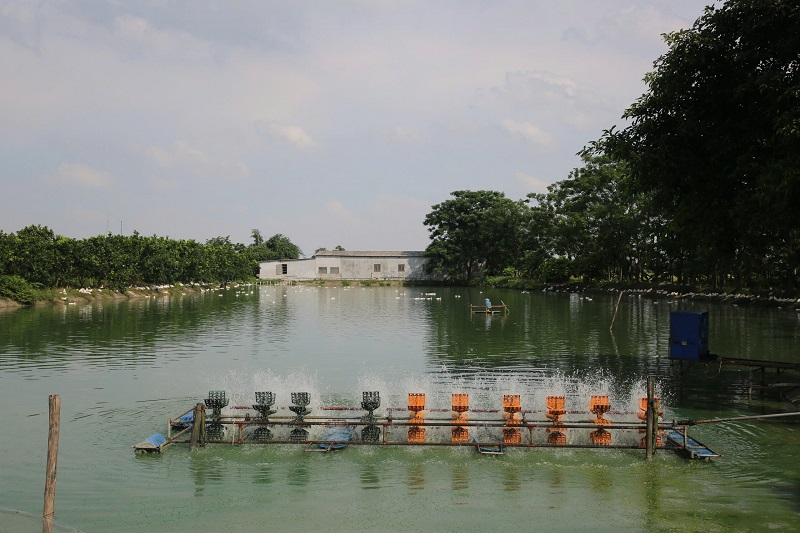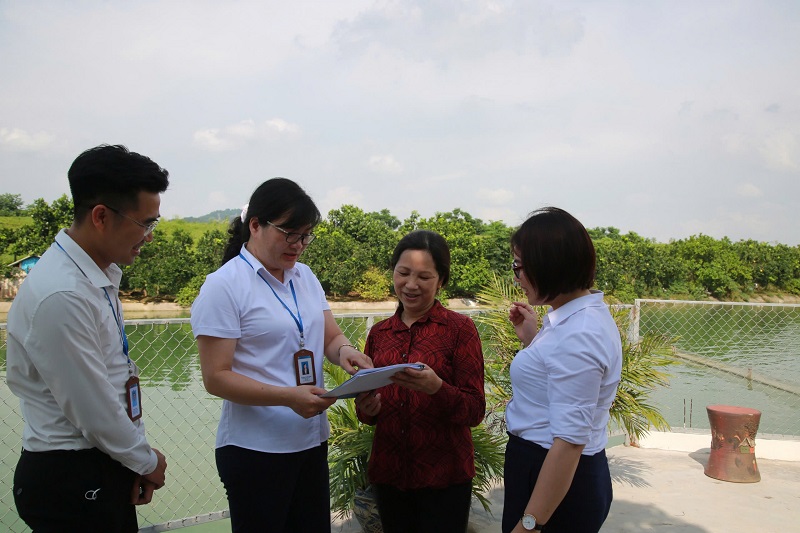Over the past 33 years, Tinh Thuong One Member Limited Liability Microfinance Institution (TYM) – Vietnam Women’s Union (VWU) has contributed to hunger eradication, poverty reduction, women’s empowerment, and promoting sustainable economic models.
In the general trend, green credit has become an important direction in achieving green growth in Vietnam. According to a recent report provided by TYM, about 43.1% of TYM’s total outstanding loans in some surveyed provinces are in the agricultural sector, in which many activities have been and are being associated with greening such as using biofertilizers, water-saving irrigation/sprinkler irrigation, and installing biogas systems.
The green credit trend has been institutionalized in the National Strategy on Green Growth for the period 2021-2030, with a vision to 2050. The Vietnamese Government has issued many important policies to encourage credit institutions to focus on environmentally friendly activities. This not only meets the requirements of reducing greenhouse gas emissions but also promotes the development of a circular economy and the conservation of natural resources. In this context, the role of microfinance institutions such as TYM is to accompany the poor and low-income people in achieving these green goals.
TYM client’s story: Economic development associated with environmental protection

One of the typical stories is Ms. Hoang Thi Tan (born in 1972, residing in Viet Van village, Viet Thong commune, Que Vo, Bac Ninh), who effectively used loans from TYM to develop the VAC economic model (garden – pond – barn) associated with the use of IMO biological products. This model not only brings stable income but also contributes significantly to environmental protection.
Receiving us inside her farm, Ms. Tan confided that up to now, she herself could not believe that her family would ever own such a large property. For Ms. Tan, this is the result of her own efforts as well as the efforts of her family members in addition to the regular annual loans from TYM.
Mrs. Tan shared that about 10 years ago, she first learned about TYM through the introduction of the Vietnam Women’s Union of Viet Thong commune. At that time, her family’s main income depended on farming on a few acres of low-lying rice fields, and she had to raise 2 children to go to school, so her condition was very difficult. Not willing to let poverty continue, Mrs. Tan discussed with her husband and boldly borrowed money to develop her family’s economy. At an age that was no longer young, she and her husband started their business with 25 million VND borrowed from TYM.
The above amount of money was used by them to repair barns and buy 3 sows for breeding. The initial business was favorable and profitable, and the couple boldly expanded their economic development according to the VAC model. However, in the following years, many diseases broke out, so her family’s economy encountered difficulties. Doing business, there are years of gain and years of loss, that is understandable, but for Mrs. Tan, losing money due to lack of knowledge is something she cannot accept.
When she held the position of Head of the Vietnam Women’s Union of Viet Van village and then Vice President of the Vietnam Women’s Union of Viet Thong commune, Mrs. Tan learned about IMO (biological products used in farming). Realizing the outstanding advantages of IMO in livestock farming, she was determined to pursue and learn.
“Back then, every time I had free time, I used the knowledge I had learned to make IMO. Seeing that, many people shook their heads, even my husband did not believe it, but when I decided to do something, I would do it,” Mrs. Tan confided.
In the following years, Mrs. Tan regularly took out loans from TYM to build a farm aiming to develop clean agriculture through the use of IMO. Instead of using drugs, Mrs. Tan used IMO products that she created herself to help her livestock increase their resistance.
“I use IMO to spray and clean the barns. I also mix IMO into the livestock feed. The effect is clearly seen when there is an epidemic, other households’ livestock struggles but my livestock and poultry are still healthy. Besides, thanks to using IMO, there is almost no foul smell inside my farm,” Ms. Tan shared.
Starting with regular annual loans from TYM, up to now, Ms. Tan’s family owns a farm of nearly 13,000m2 with 300 sows, more than 500 pigs, 200 pomelo trees and 3 fish ponds… Not only creating a sustainable economy with a stable annual income for the family, Ms. Tan’s farm also creates jobs for 4 regular workers and many other seasonal workers.
Mr. Le Kim Cuong, Head of Transaction Office No. 2 of TYM – Bac Ninh City Branch (where Ms. Tan avails her loan) said that he himself also admires the determination, boldness, and daring of the female customer: “When Ms. Hoang Thi Tan started building the VAC model from TYM’s loans, the IMO method was something very strange. In Bac Ninh, Ms. Tan was the first customer of TYM to apply the IMO method in agricultural production activities.”
Gardening, combined with raising livestock and releasing fish in a closed circle, but the advantage of Ms. Tan’s economic model, according to Mr. Cuong, is that the environment is not destroyed and is completely clean.
“With the advantages of the above economic method, we often bring our customers to Ms. Tan’s farm to learn about economic development experiences associated with environmental protection,” said Mr. Cuong.

Green credit trend: Connecting sustainable agriculture
At TYM, many current lending activities have contributed to supporting greening. According to statistics from some regions, 48.5% of TYM’s surveyed clients used loans to invest in biofertilizers, 25.8% applied water-saving irrigation systems, and 12% improved soil and cultivated sustainably.
These green economic practices not only meet the need for green growth but also help increase sustainable economic efficiency for clients. For example, water-saving irrigation systems not only reduce water consumption but also increase crop yields. Similarly, the use of biofertilizers has helped improve soil quality, reduce costs of purchasing chemical fertilizers, and protect workers’ health.
In particular, loans supporting sustainable agriculture at TYM are often small in value, suitable for the needs of rural households. These activities have not only helped TYM enhance its reputation in the community but also created a premise for the organization to go further in developing green credit products.
In the future, TYM plans to continue expanding its portfolio of environmentally friendly credit products. These steps not only benefit customers but also contribute to the sustainable development of the country.
According to: Vietnam Women’s Newspaper
